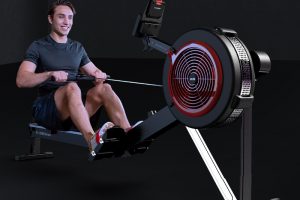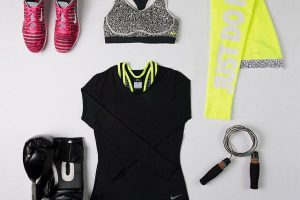Sporting excellence is not just about talent and training; the right equipment plays a pivotal role in achieving peak performance. Among the most critical pieces of gear are sports shoes. Whether you’re a professional athlete or a fitness enthusiast, selecting the right pair of sports shoes is essential for improving your performance and preventing injuries. In this extensive guide, we’ll delve deep into the world of sports footwear, exploring the factors to consider, understanding different types of sports shoes, and providing valuable insights into making the best choice.
The Science Behind Sports Shoes
Before we dive into the selection process, it’s essential to understand the science behind sports shoes. Proper footwear is designed to provide support, cushioning, and stability. The key elements that influence shoe performance are:
1. Biomechanics
- Foot strike pattern: Understanding how your foot contacts the ground is crucial.
- Pronation: The degree to which your foot rolls inward during each stride.
- Arch type: Whether you have high, low, or neutral arches affects shoe selection.
2. Cushioning
- Different sports require varying levels of cushioning.
- The type of cushioning material, such as EVA foam or gel, impacts comfort.
3. Outsole Traction
- The sole’s grip influences your stability and traction on various surfaces.
- Consider the pattern and rubber compound of the outsole.
4. Weight
- Lighter shoes can improve speed and agility, while heavier ones offer durability.
Types of Sports Shoes
Sports shoes are not one-size-fits-all; they are specialized for specific activities. Understanding the different types can help you make an informed choice.
1. Running Shoes
- Neutral, stability, and motion control shoes cater to different pronation levels.
- Minimalist and maximalist options provide varying levels of cushioning.
- Consider factors like terrain and distance when choosing running shoes.
2. Basketball Shoes
- High-top, mid-top, and low-top options offer ankle support to varying degrees.
- Choose the right level of cushioning for your playing style.
- Outsole patterns are designed for indoor or outdoor play.
3. Tennis Shoes
- Select court-specific shoes for hard courts, clay, or grass.
- Tennis shoes prioritize lateral support, durability, and grip.
4. Soccer Cleats
- Different stud patterns suit various field conditions.
- Consider your playing position, as forwards and defenders may have different needs.
5. Cross-Training Shoes
- Versatile shoes suitable for a range of activities like weightlifting, aerobics, and more.
- Offer a balance of stability and cushioning.
6. Walking and Hiking Shoes
- Walking shoes are lightweight and flexible, while hiking shoes provide more support.
- Waterproofing and ankle support are essential for hiking.
Finding the Perfect Fit
A shoe’s effectiveness depends largely on how well it fits your feet. Here’s how to ensure you find the perfect fit:
1. Measure Your Feet
- Foot size can change over time, so measure both feet and go by the larger size.
- Measure your feet at the end of the day when they’re at their largest.
2. Consider Socks
- Try shoes on with the type of socks you’ll wear during your sports activity.
3. Leave Room for Toes
- Your toes should have about a thumbnail’s length of space in front of them.
4. Check Width
- Make sure the shoes are wide enough to accommodate your foot comfortably.
5. Try Before You Buy
- Always try shoes on before purchasing, and walk around the store to assess comfort.
Evaluating Pronation
Pronation is a crucial aspect of choosing the right sports shoes. Understanding your pronation type helps you select shoes that provide the necessary support and stability.
1. Overpronation
- Overpronators have excessive inward rolling of the foot.
- Look for stability or motion control shoes with reinforced arch support.
2. Underpronation (Supination)
- Underpronators have insufficient inward rolling.
- Neutral-cushioned shoes with additional shock absorption are ideal.
3. Neutral Pronation
- Neutral pronators have a balanced foot strike.
- A wide range of shoe types can work, depending on the specific activity and comfort.
Testing and Trying On
To make the right choice, you must test and try on different options. Here’s what to do:
1. Specialty Stores
- Visit stores specializing in sports footwear, where knowledgeable staff can assist you.
2. Gait Analysis
- Many stores offer gait analysis to determine your pronation type.
3. Don’t Rush
- Take your time trying on various brands and styles to find the perfect fit.
Consider Your Sport
The type of sports shoes you need can vary significantly based on your chosen activity.
1. Running
- Consider factors like cushioning, arch support, and terrain.
- Opt for lightweight options for speed or maximal cushioning for comfort on long runs.
2. Basketball
- Ankle support and cushioning are essential for jumping and lateral movements.
- Match your shoe type to the court surface.
3. Tennis
- Lateral stability and durability are critical for tennis shoes.
- Choose court-specific shoes based on your preferred playing surface.
4. Soccer
- Cleat length and pattern should match the field conditions.
- Position-specific cleats can enhance performance.
Price vs. Quality
Quality sports shoes can be an investment, but they are essential for performance and injury prevention. While budget-friendly options are available, consider the long-term benefits of investing in a reputable brand with advanced technology.
Maintaining Your Sports Shoes
Once you’ve found the perfect pair of sports shoes, proper maintenance is crucial to extend their lifespan and performance. Here are some tips:
1. Rotate Your Shoes
- Alternate between multiple pairs of sports shoes to prevent excessive wear.
2. Clean and Dry
- Keep your shoes clean and dry to prevent odor and deterioration.
- Remove insoles and laces for thorough cleaning.
3. Replace When Needed
- Pay attention to the condition of your shoes and replace them when they show signs of wear and tear.
- Running shoes typically last 300-500 miles, while other sports shoes have varying lifespans.
The Final Verdict
Selecting the right sports shoes is a critical decision for anyone who enjoys physical activities. Your choice should prioritize comfort, support, and performance enhancement. With a clear understanding of your foot type, gait, and specific sport requirements, you’ll be well-equipped to make an informed decision. Remember that the perfect sports shoe can take your performance to the next level and keep you injury-free, making it an investment worth every step.
In conclusion, the journey to finding the best sports shoes is not a sprint; it’s a marathon. Take the time to explore and try different options, consult experts when needed, and don’t compromise on quality. Your feet will thank you, and your sports performance will reflect the wisdom of your choice. So, lace up and step into your next adventure in the world of sports, confident that you now possess the knowledge needed to select the perfect pair of sports shoes.
The Evolution of Sports Shoe Technology
Over the years, sports shoe technology has advanced significantly. Understanding these advancements can help you make more informed choices. Here are some key developments:
1. Cushioning Technology
- Early sports shoes offered minimal cushioning, but modern designs incorporate advanced materials like air cushioning, gel inserts, and responsive foams to enhance comfort and reduce impact on your joints.
2. Lightweight Materials
- Traditional leather shoes have given way to lightweight synthetic materials that offer a balance of durability and agility. This shift has had a profound impact on sports like running and basketball.
3. Biomechanical Research
- Advances in biomechanical research have led to a better understanding of foot mechanics and gait analysis, allowing for more tailored shoe designs to support different pronation patterns.
4. Customization
- Some brands offer customization options, allowing you to choose aspects like cushioning, arch support, and even colors to suit your individual preferences and needs.
Sustainability in Sports Footwear
As awareness of environmental issues grows, the sports shoe industry has started to embrace sustainability. You can now find eco-friendly options made from recycled materials, and some brands are incorporating innovative designs that reduce waste. Consider these factors when selecting sports shoes to support both your performance and the planet.
The Influence of Fashion
Sports shoes have transcended their functional role and become fashion statements. Whether it’s the latest sneaker drops or retro classics, style often plays a significant role in sports shoe choices. While aesthetics are important, remember that performance and comfort should be your top priorities.
Expert Insights and Reviews
In your journey to find the perfect sports shoes, don’t hesitate to seek advice from experts and read reviews from fellow athletes. Websites, forums, and expert guides can provide valuable insights, helping you make an informed decision.
Conclusion
Choosing the best sports shoes is a process that involves a blend of science, personal preference, and practicality. Your feet are your foundation in sports, and the right shoes can significantly impact your performance and overall experience. By considering factors like biomechanics, pronation, shoe type, and activity-specific requirements, you can make a well-informed decision.
Remember that there’s no one-size-fits-all solution when it comes to sports shoes. Take your time to research, try on various options, and consult experts if needed. Your investment in quality sports shoes will pay off in improved performance and injury prevention, ensuring that you enjoy your chosen sport to the fullest.
So, as you embark on your sports shoe journey, remember that the perfect pair of sports shoes can be a game-changer in your athletic endeavors. It’s not just about style; it’s about enhancing your performance, protecting your feet, and ensuring your sporting adventures are both enjoyable and safe. Choose wisely, lace up, and step confidently onto the field, court, or track. Your feet are your biggest fans; give them the support they deserve.





Add Comment